By Patti Casey, VT Agency of Agriculture, Food & Markets
The Vector Surveillance Program (VSP) tracks vector (disease-carrying) populations of mosquitoes and ticks statewide through several programs.
Mosquito Surveillance Program
Our flagship program is our Mosquito Surveillance Program. In this program, we trap mosquitos that may carry such diseases as West Nile virus (WNV) and Eastern Equine Encephalitis (EEE) and identify them to species in our lab. We coordinate with the VT Department of Health Laboratory (VDHL) to test the mosquitoes for viruses. We have over 100 trap sites statewide and use different types of traps to conduct surveillance. We employ a minimum of 6 field and lab technicians from May through November each year. The program’s primary goal is to locate and monitor vector mosquitoes in the interest of protecting public health, not to control nuisance mosquito populations.
Our Mosquito Surveillance Program includes a rapid response arm that micro-locates surveillance to areas of concern, whether stemming from human or veterinary illness or from overwhelming numbers of nuisance mosquitoes that could contain vector populations.
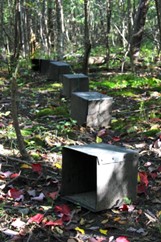
Types of Mosquito Traps
Resting box traps target Culiseta melanura, the main vector of EEE. These boxes are placed at the edges of acidic hardwood swamps. Female mosquitoes that have taken a bloodmeal from birds in the tree canopy above settle to the forest floor to find a dark and quiet place to digest the bloodmeal and make her eggs. The mosquitoes settle into these boxes and are vacuumed out weekly using a handheld aspirator.
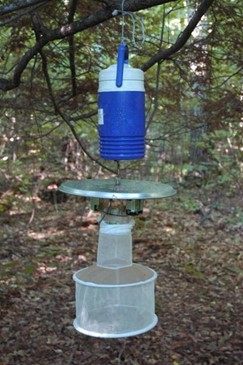
CDC Light Traps are used as a sensing tool to determine the mosquito species that are present in the area. Dry ice, which releases carbon dioxide, is used to attract female mosquitoes that are looking for a bloodmeal.
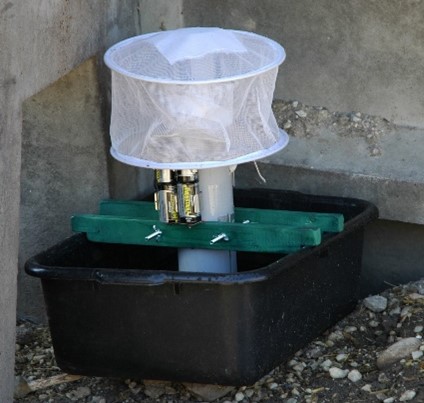
Gravid traps target Culex mosquitoes, the main vector of WNV. This trap uses a tray of cow manure water that attracts female mosquitoes looking for a place to lay her eggs.
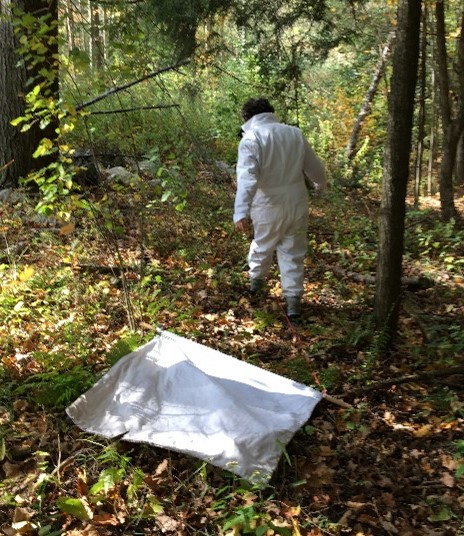
Tick Surveillance Program
We have a robust Tick Surveillance Program. We have completed one 5-year cycle and are in our second round of statewide surveillance of all towns in Vermont. We gather information on tick species present in Vermont, what their preferred habitats are, what the tick density is by town, and what diseases they may be carrying. These ticks are tested for diseases such as Lyme disease, anaplasmosis, babesiosis, Powassan virus, and Borrelia miyamotoi.
We also operate the citizen-driven Passive Tick Surveillance Program (PTSP), in which Vermonters who find ticks on themselves, their children or pets, or in their environment can send them to our lab for identification. All ticks submitted should have the date and physical location of discovery (eg, “on my arm”), the geographic location from which the tick came as best as can be determined, and contact information for the sender. In return, we provide information on the species, life stage, sex, and engorgement rate of the tick, so that in the event of illness, the sender can give this information to a care provider to guide treatment. We do not test these ticks for diseases.
We partner with VDH in a separate statewide tick surveillance program that targets geographic areas of concern based on tick densities (as determined by our own internal tick surveillance program) or on areas of increased human illness as reported by VDH.
We also survey for and prepare to respond to emerging tick and mosquito arboviral vectors (possibly as yet undetected in Vermont), such as the Long-Horned Tick (pictured below). The Long-Horned Tick is a species of livestock and wildlife concern, so if you find anything resembling this species, please get in touch through our PTSP.
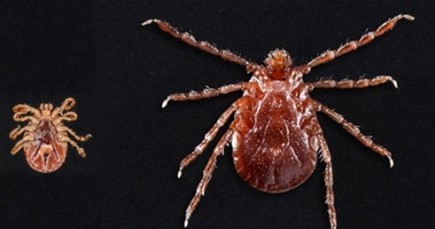
Long-Horned Tick (Haemaphysalis longicornis) Photo credit CDC
If you see us out there in the field waving a big white flannel flag through vegetation looking for ticks or vacuuming mosquitoes out of a bunch of little black boxes, stop over and say hi. Our techs don’t bite, even though the mosquitoes may!
And remember to wear long pants and long sleeves as much as possible when you’re working outdoors, wear your EPA-approved insect repellent, avoid dawn, and dusk activities, and get rid of any standing water around your home or farm that you can.

